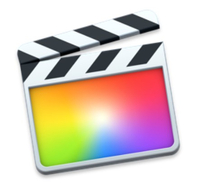10 video editing tips for beginners
Edit videos like a professional with these must-have video editing tips for enhancing your productivity as a filmmaker.

Filming your shot properly is only half the battle; the other half is in the post-production stage. This is when you put your wizard hat on and make necessary edits to make your video flow smoothly and professionally.
Like filming, video editing requires a good combination of creative sense and technical skills. It also needs the best video editing software for the job. In this article, we will cover some of the best video editing tips to maximise your productivity as a film producer.
But first, if you don't have your software sorted, then don't miss these deals on video editing software – and be sure to get access to the best cloud storage, too. You can also check our guide to the best video editing apps for YouTube.
1. Premiere Pro: the best video editing software
Aimed at professional editors, Adobe's Premiere Pro is our pick of video editing software. This industry standard tool works on both PC and Mac, and offers everything you need.
2. Final Cut Pro X: the best choice for Mac users
Optimised for macOS, Final Cut Pro has a great reputation within the industry and is the best option for Apple users who want to make movies easily.
Video editing tips
01. Start before production
The best filmmakers know to take editing considerations seriously before they even start filming their video. For example, do you need to take any special precautions while filming, such as using soundproof padding for reducing echo? Selecting the best camera and microphone for the studio can help you fix half the problems that you might later encounter during the editing stage.
02. Have a clear vision
Before you get started, you should take a moment to ask yourself some basic questions about the footage you’re trying to edit. Think about the audience it’s going to serve and the purpose it’s going to fulfill.
Having a story vision will help you determine basic things like the correct order of your clips and which parts should receive the most attention, as well as solving advanced problems like what art style and visual direction you should go with.
03. Use solid hardware
Depending on the nature of your project, you will want to invest in good-quality hardware that doesn’t bottleneck your software. For example, producers should invest in one of the best computers for video editing with at least 8GB of RAM and 4GB of VRAM if they plan to edit in 4K. For cloud-based editing software, having a fast internet connection is a must.
04. Choose the right software
Based on your budget and skillset, you will want to pick the right video editing tool for the job. If it’s a very simple edit, think about going with your device operating system’s default video editor, such as Windows Video Editor or Apple iMovie. These tools aren’t good for advanced editing, but it should suffice if all you need is to cut, transform, and enhance.
For more advanced needs, consider something mid-range and beginner friendly like Adobe Spark or Wondershare Filmora. If you’re really confident about your video editing skills, you can go with Adobe Premiere Pro or Apple Final Cut Pro X.
It’s also worth considering the price of the software you are about to buy. Unless you are editing for professional reasons, a basic editing tool (or even a free one) should be enough for your needs. Consider investing in a professional video editing suite only when you need advanced effects and have a professional budget.
05. Memorise keyboard shortcuts
Take some time to memorise the most frequently used keyboard shortcuts that you will be using within your video editing software. It may seem like extra work, but it will actually save you a lot of time down the line.
A few examples for Adobe Premiere Pro include pressing V to bring out the Selection Tool and Z for the Zoom Tool, Ctrl+Alt+N to create a New Project, and Ctrl+I for Import. Other popular applications, like Apple Final Cut Pro X, DaVinci Resolve, and Media Composer, all have their own keyboard shortcuts worth learning.
06. Study the terminology
In every industry, there is a list of terms that are used to refer to commonly encountered subjects. You can call it technical jargon, but there’s no avoiding it. The video editing industry is no different. Familiarising yourself with terms like jump cuts and montage will actually help you save a lot of time understanding simple concepts.
It is worth taking the time to memorise these terms because every time you encounter an issue and have to look up a tutorial, your search will be so much easier if you know how to describe your problem using the right terminology.
07. Organise your files
Make sure to label all your clips properly based on the order in which they should appear in the final video. Another good practice is to create separate folders for the images, sounds, and music that you will require during the editing process. This helps you stay organised and find your files easily when you need them. In fact, a lot of video editing applications allow you to do this within the software itself after you have created your new project.
08. Save 3 backups
In video editing, it’s called the 321 Rule. As a rule of thumb, you should always keep three separate copies of every file that you will need for your video editing project. Ideally, one of these copies should be in the hard drive of your computer, another should be in the cloud, and the final one should be in an external storage device such as a flash drive.
There are a number of good cloud storage platforms that allow you to keep backups of all your video files. To get an idea of which ones might work for you, check out our buying guide for the best cloud storage for photos and videos.
09. Create for the web
You may be tempted to export every video you create in the highest resolution possible simply because of how good it looks. It’s important for your work to look good, but it’s also worth noting that if you’re producing for an online audience, high-resolution videos are slower to load. It’s always worth creating a couple of low-fidelity versions of your project so that you can share them quickly on social media or in blog posts.
10. Colour is everything
Finally, colour is the most important element of design. This is true for digital artists, graphic designers, and even film producers. Once you have finalised an art style for your project, make sure to use consistent colours to convey each scene.
Specifically in video editing, there are two ways producers interact with colour. Colour correction is used to adjust the saturation and hue of your clips so that they look better and appear professional. Colour grading, on the other hand, serves to differentiate certain sequences, such as flashbacks, from the rest of the film.
If you’d like to learn more about colour grading in video production, check out our article: What is colour grading? It also covers the difference between colour correction and colour grading in more detail.
Read more:

Thank you for reading 5 articles this month* Join now for unlimited access
Enjoy your first month for just £1 / $1 / €1
*Read 5 free articles per month without a subscription

Join now for unlimited access
Try first month for just £1 / $1 / €1
Get the Creative Bloq Newsletter
Daily design news, reviews, how-tos and more, as picked by the editors.

Ritoban Mukherjee is a tech and innovations journalist from West Bengal, India. He writes about creative software, from AI website builders, to image manipulation tools, to digital art generators, and beyond. He has also been published on Tom's Guide, Techradar, IT Pro, Gizmodo, Quartz, and Mental Floss.


